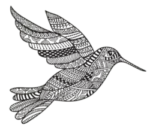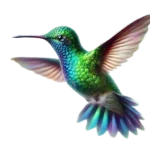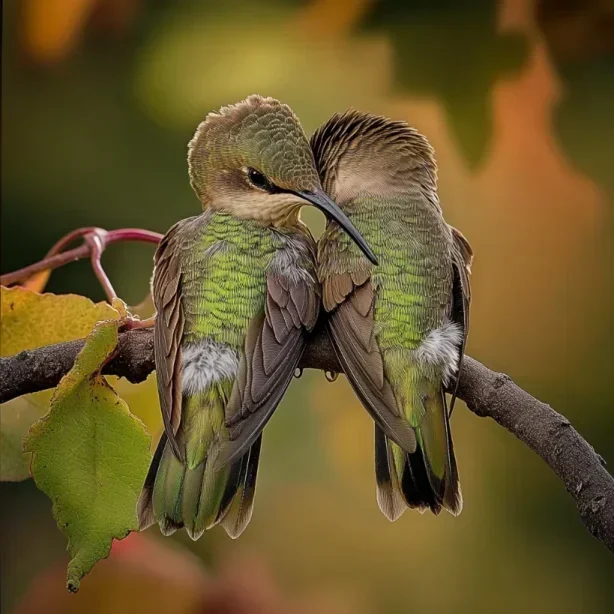(Or: How to Become Friends with Flying Jewels)
Welcome to the fascinating world of hummingbird watching, where patience meets wonder and nature puts on its most dazzling, tiny show. Whether you’re a seasoned birder looking to specialize or a complete novice captivated by these aerial acrobats, this guide will help you transform your backyard observations into a rewarding pursuit.
Let’s begin with some fundamental traits that make successful hummingbird watchers:
- Patience that would impress a statue
- Attention to detail worthy of a detective
- Willingness to sit quietly for extended periods
- Basic understanding of hummingbird behaviour
- Genuine curiosity about these remarkable creatures
Getting Started: The Basic Setup
Think of hummingbird watching as setting up a tiny theatre where you’re both the audience and the stage manager. Your success begins with creating the right environment that encourages these diminutive performers to appear regularly.
Essential elements include:
- Strategic feeder placement
- Comfortable observation points
- Basic identification guides
- Recording materials
- Proper clothing choices
The Timing Factor
Timing is everything in hummingbird watching. These tiny dynamos operate on a precise schedule that, once understood, makes viewing much more predictable and rewarding. Learning their daily patterns is like discovering the secret schedule of nature’s most spectacular show.
Key timing considerations include:
- Early morning peak activity
- Late afternoon feeding rushes
- Seasonal migration patterns
- Weather influences understanding
- Territory establishment periods
The Observation Station
Creating a proper observation post is crucial for successful hummingbird watching. Imagine designing your personal wildlife blind that balances comfort with strategic positioning.
Station essentials include:
- Comfortable seating
- Clear sight lines
- Weather protection
- Minimal movement requirements
- Easy access to note-taking materials
The Equipment Essentials
While hummingbird watching doesn’t require the extensive gear of general birding, having the right tools enhances your experience significantly. Quality is probably more significant than quantity when assembling your kit.
Basic equipment includes:
- Good binoculars (8×42 recommended)
- Field guide with range maps
- Weather-resistant notebook
- Camera (optional but rewarding)
- Reference materials for identification
The Identification Game
Learning to identify different hummingbird species is like becoming fluent in a new language – it takes time, but the rewards are worth the effort. Start with the common species in your area before expanding your knowledge.
Identification focuses include:
- Size and shape recognition
- Flight pattern observation
- Color pattern study
- Behavioral characteristics
- Vocalization familiarity
The Behaviour Watch
Understanding hummingbird behaviour transforms random sightings into meaningful observations. It’s like learning to read a fascinating story written in the language of tiny wing beats and aerial maneuvers.
Behavioural study includes:
- Feeding patterns
- Territorial displays
- Courtship rituals
- Social interactions
- Nesting activities
The Documentation Dance
Recording your observations helps build a valuable personal reference and contributes to citizen science. Think of it as creating your own hummingbird biography.
Recording essentials include:
- Species identification
- Date and time notes
- Weather conditions
- Behavioral observations
- Population patterns
The Photography Challenge
Photographing hummingbirds presents unique challenges but offers incredible rewards. It’s like trying to capture lightning in a bottle – difficult but magical when successful.
Photography basics include:
- High shutter speeds
- Proper lighting setup
- Focus point selection
- Background consideration
- Patience development
The Social Network
Connecting with other hummingbird enthusiasts enhances your watching experience and provides valuable learning opportunities. Consider joining a club where everyone shares your fascination with these tiny wonders.
Community involvement includes:
- Local birding groups
- Online forums
- Citizen science projects
- Data sharing
- Experience exchange
The Learning Curve
As you develop your hummingbird-watching skills, you’ll find that each observation adds to your understanding and enjoyment. It’s a journey of continuous discovery where even experts learn something new every day.
Skill development includes:
- Pattern recognition
- Behavior prediction
- Species identification refinement
- Habitat understanding
- Seasonal awareness
Conclusion: Your Journey Begins
Remember, successful hummingbird watching is less about high-tech equipment and more about developing patience, awareness, and appreciation for these remarkable creatures. Each watching session is an opportunity to witness one of nature’s most extraordinary shows.
Start by setting up a feeder in your backyard today and share your experiences online!
Remember: The best hummingbird watchers aren’t just observers – they’re students of nature who understand that every tiny visitor has something new to teach us about the natural world.
Post Script: Some experienced watchers suspect hummingbirds enjoy having an audience. The birds maintain their professional performer status on this matter, but their tendency to put on spectacular shows when watched suggests they might appreciate an attentive audience.


